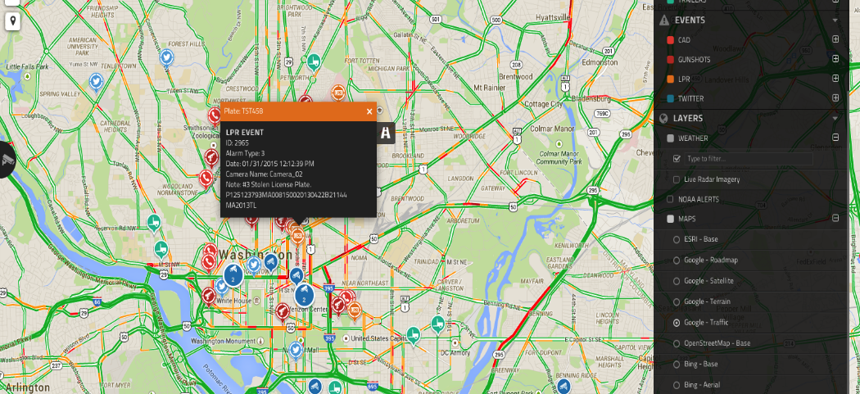New surveillance technology helps take over drones
A data-gathering platform is designed to enhance offensive electronic warfare abilities.
Thanks to a data-gathering surveillance platform originally developed for cities, an emerging battlefield technology will allow soldiers to take control of enemy drones by intercepting and manipulating radio frequencies.
Called the Hitachi Visualization Suite (HVS), the platform collects, consolidates, and analyzes technological information in a single, centralized program designed to significantly improve electronic warfare capabilities. Gathering relevant data and metadata is crucial to U.S. military supremacy and fits with the technological advances and advantages outlined in the “Third Offset” strategy announced earlier this year.
Chris Jensen, director of Critical Infrastructure Engagements and Developments at Hitachi Data Systems Federal, oversees the HVS, which several cities adopted over the past few years. “Whether you are the military or a law enforcement agency or critical infrastructure security, you’ve got information overload almost all of the time,” he said. “How do you turn that to your advantage … how do you create opportunities to exploit all the information you’re ingesting?”
The company’s answer to this question is the HVS, which illuminates a given area’s electronic web to locate any electronic device — even an automobile’s tire pressure sensor — and then take control or shut it down. And unlike radio jamming, which disrupts the entire radio frequency environment, the HVS targets specific devices without disturbing the various electronic systems in close operation. Cloud-based, scalable capabilities enhance the system’s functionality.
A shift to supporting military operations was a natural progression. “We can push the Visualization Suite to any tablet or phone browser,” Jensen said. Soldiers on the front lines can now disable an enemy drone, locate opposition soldiers, or uncover IEDs, rather than rely on a distant command and control center. Safety increases as the risk subsides.
Jensen said his team could set up a command and control center, complete with HVS technologies, in less than six hours. Third-party systems, such as cameras, can also be incorporated to further flesh out the data. As Jensen puts it, today’s security experts aren’t “interested in the roadside bomb, per se, but the person who’s setting it.”
NEXT STORY: Air Force to strengthen nuclear arsenal IT




